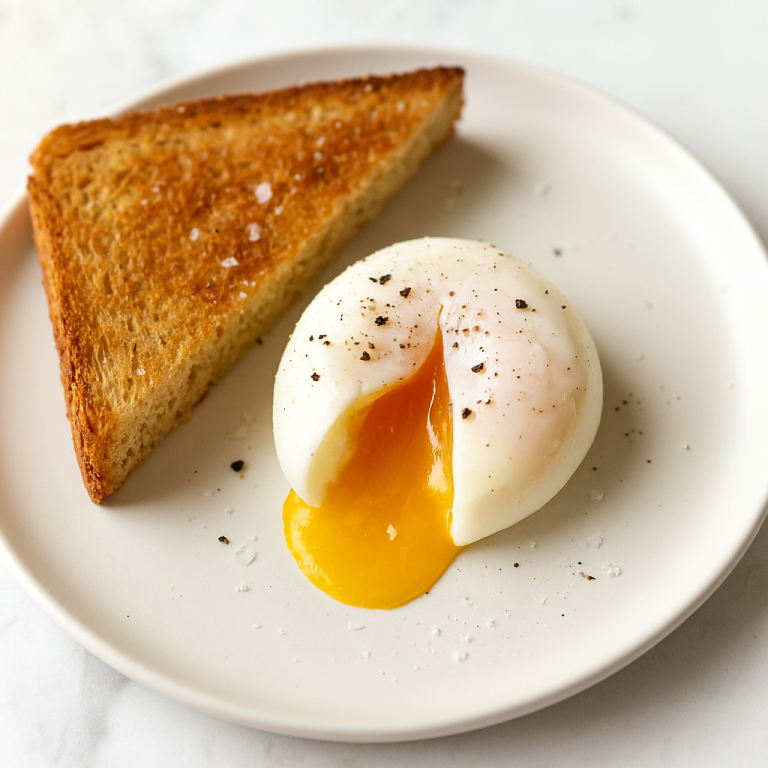Mountain Batard (Two Methods)
This is a 72% hydration sourdough batard adapted for 7,000 feet. The higher hydration teaches you to handle wetter dough while the oval shape gives you more crust-to-crumb ratio than a boule. The overnight cold fermentation is the primary method here — it develops better flavor and the cold dough is much easier to shape at this hydration.
Same-day method included if you’re around all day and want fresh bread by dinner.

Mountain Batard (Two Methods)
Ingredients
Method
- Feed your starter 8-10 hours before evening mixing. It should be at peak by the time you’re ready to mix — doubled in volume, bubbly, and domed on top.
- Autolyse: In a large mixing bowl or 6-quart Cambro, combine both flours, the active starter, and cool water (65-70°F/18-21°C). Mix until no dry flour remains.
- Water Temperature Note: Use 65-70°F water for overnight method. You're only doing 2-3 hours at room temperature before refrigerating. The cold fermentation does the work. Avoid water warmer than 75°F for this method.
- Cover and rest for 60 minutes.
- Add Salt
- Sprinkle the 9g sea salt evenly over the dough surface.
- Pincer method: Use a pincer grip (thumb and fingers) to cut through the dough repeatedly, squeezing and folding to incorporate the salt. Work for 3-5 minutes until evenly distributed. The dough will tighten slightly and become more cohesive. Cover.
- First fold (15 minutes after salt): With wet hands, perform stretch-and-folds. This dough is stickier than a 66% — keep your hands wet. Stretch one side up and fold over. Rotate 90° and repeat 4 times. This incorporates the salt and builds initial structure. Cover and rest.
- Second fold (30 minutes later): Fold again. Dough should be gaining strength and cohesion. Cover and rest.
- Third fold (30 minutes later): Final fold. Check for visible bubbles forming and elastic texture. Cover and rest.
- Rest before refrigerating (60-75 minutes after final fold): Let dough rest until you see early fermentation activity — small bubbles, slight volume increase, bouncy texture.
- Cover tightly with plastic wrap or tight-fitting lid to prevent drying. Refrigerate 8-12 hours at 36-40°F.
- Minimum: 8 hours
- Ideal: 10-12 hours (best flavor development)
- Maximum: 16 hours (if needed)
- Remove from refrigerator: Dough should show 30-50% volume increase, feel puffy, and have visible bubbles throughout.
- Pre-shape immediately: Turn cold dough onto lightly floured surface. With wet hands, gently pre-shape into a loose oval — not a round. You're heading toward a batard, so start oval now. Work quickly — cold dough handles beautifully.
- Bench rest: Cover with towel and rest 25-30 minutes. Cold dough needs slightly longer to relax.
- Flour your work surface lightly. Flip the dough seam-side up.
- Fold the top third down toward the center
- Fold the bottom third up and over, like a letter
- Rotate 90° so the seam runs left to right
- Starting from the top, roll the dough toward you, using your thumbs to create tension
- Seal the seam with the heel of your hand
- Cup your hands around the ends and gently taper into points
- Place seam-side up in a floured oval banneton (11-13″ long) or a floured couche. Cover with cloth.
- Room Temperature Proof – 2 to 3 Hours
- Proof at room temperature (68-72°F) for 2-3 hours. Cold-fermented dough takes longer to proof than room-temperature dough.
- Pillowy, jiggles when shaken
- Poke test: springs back slowly, leaves slight indent
- Noticeably increased in size
- Preheat oven: One hour before baking, preheat to 475°F with baking steel on middle rack.
- Turn out and score: Dust loaf with rice flour, invert onto steel peel. Score with a single long slash down the center at a 30-45° angle — classic batard score.
- Load and steam: Slide loaf onto preheated steel. Immediately reduce oven to 450°F. Spray loaf and oven walls generously with water (5-6 sprays — the higher hydration and altitude both pull moisture fast). Close door quickly.
- Bake: Bake at 450°F for 20 minutes, then rotate loaf for even browning. Continue baking 15-20 minutes more, checking every few minutes toward the end. Target: deep mahogany crust, 200-205°F internal, hollow thump when you knock the bottom.
- Cool: Transfer to wire rack. Cool at least 1 hour before slicing. Cold-fermented bread develops complex flavors over the first 4-6 hours after baking.
- Use this method if you’re around all day and want fresh bread by late afternoon or evening.
- Feed Your Starter (Night Before or Early Morning)
- Feed your starter 8-10 hours before mixing. It should be at peak activity — doubled in volume, bubbly, and domed on top.
- Combine both flours, the active starter, and warm water (78-82°F/26-28°C). Mix until no dry flour remains. The dough will be shaggy and noticeably wetter than a 66% hydration loaf.
- Water Temperature Note: The higher hydration absorbs more heat during mixing. Use 78-82°F water for same-day baking. In summer or if your kitchen runs above 75°F, drop to 75°F water. Do not exceed 85°F.
- Cover and rest for 90 minutes. The extended autolyse helps the flour absorb the extra water and builds extensibility you’ll need for shaping.
- Sprinkle the 9g sea salt evenly over the dough. Use pincer method to incorporate, working 3-5 minutes until evenly distributed. Cover.
- First fold (30 minutes after salt): Stretch-and-fold with wet hands. Cover and rest.
- Second fold (45 minutes later): The dough should be gaining strength but still feel extensible. Fold again. If it feels tight or resistant, skip and wait. Cover and rest.
- Third fold (45 minutes later): Check for visible bubbles and increased volume. If the dough is still slack, fold again. If it’s holding its shape well, you can skip this fold. Cover and rest.
- Dough increased 30-50% in volume
- Soft, stretchy, jiggly texture
- Visible bubbles throughout
- Passes windowpane test
- Domed surface
- Pre-shape
- Turn dough onto a lightly floured surface. With wet hands, gently pre-shape into a loose oval. Handle gently to preserve air.
- Bench rest: Cover with a towel and rest 20 minutes.
- Shape into batard (see overnight method instructions above). Place seam-side up in floured oval banneton or couche. Cover with cloth.
- Proof at room temperature (68-72°F) for approximately 1.5-2 hours. Warmer kitchens may need only 75 minutes; cooler may need 2.5 hours.
- Poke test: Press gently with a floured finger. It should spring back slowly, leaving a slight indent.
- Same as overnight method:
- Score with single long slash
- Reduce to 450°F, spray generously (5-6 sprays)
- 20 minutes, rotate, then 15-20 minutes more
- Target 200-205°F internal, deep mahogany crust
- Cool: Wire rack, at least 1 hour before slicing.
Notes
Why 72% Hydration?
Higher hydration creates a more open crumb and chewier texture. It’s stickier to work with, but the overnight method makes it easier — cold dough is far more manageable. This is the next step up from the 66% Mountain Morning.Why Overnight is the Primary Method
At 72% hydration, the dough is sticky. Cold fermentation firms it up significantly, making shaping straightforward instead of a wrestling match. You also get better flavor development — the extended time allows organic acids and aromatic compounds to develop complexity you can’t get in a same-day bake.Altitude Adjustments Already Built In
- Shorter bulk fermentation (3-3.5 hours same-day vs. 5 hours at sea level)
- 50/50 flour blend for better structure without toughness
- Extra steam during bake to combat moisture loss
Batard vs. Boule
The batard shape gives you more crust per slice, which matters for sandwiches. It also scores differently — the single long slash creates the classic “ear” that opens during baking.Banneton Size
An 11-13″ oval banneton works best for this dough weight (~784g). If yours is shorter, the loaf will be taller and may not open as dramatically during baking. Still delicious, just a different profile.Fridge Temperature
- Fridge should be 36-40°F for proper fermentation control
- If your fridge is warmer (40-45°F), reduce cold fermentation to 8-10 hours
- If your fridge is colder (32-36°F), you can extend to 14-16 hours safely
Sample Schedules
Overnight (Weeknight → Weekend Morning)- Feed starter: morning
- Mix dough: 6:00 PM
- Into fridge: 9:00 PM
- Out of fridge: 6:00 AM
- Shape: 6:30 AM
- Bake: 9:00 AM
- Feed starter: night before
- Mix dough: 8:00 AM
- Bulk fermentation: until noon
- Shape: 12:30 PM
- Bake: 3:00 PM






